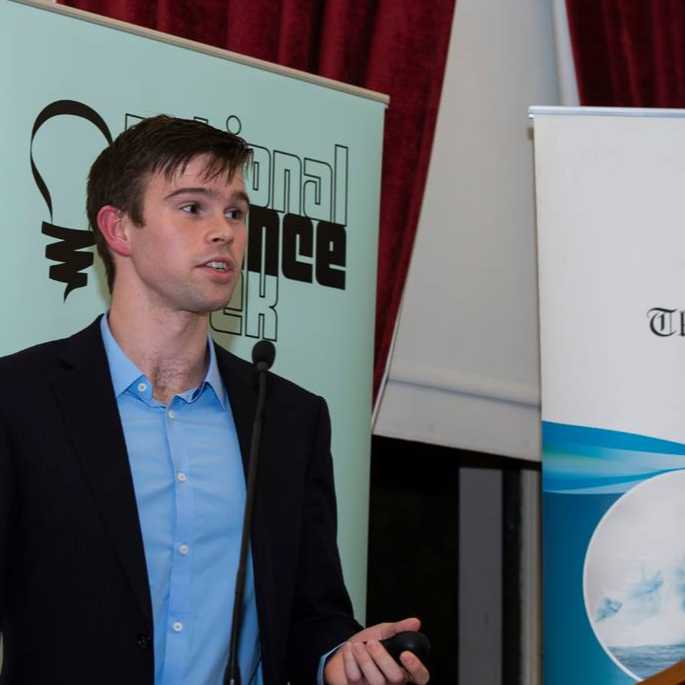Dec 14, 2021
Immunohistochemical labelling of lower urinary tract afferents in spinal cord
- 1University of Melbourne
- SPARCTech. support email: info@neuinfo.org

Protocol Citation: Janet R Keast, Peregrine B Osborne, John-Paul Fuller-Jackson 2021. Immunohistochemical labelling of lower urinary tract afferents in spinal cord. protocols.io https://dx.doi.org/10.17504/protocols.io.byqcpvsw
License: This is an open access protocol distributed under the terms of the Creative Commons Attribution License, which permits unrestricted use, distribution, and reproduction in any medium, provided the original author and source are credited
Protocol status: Working
We use this protocol and it’s working
Created: October 01, 2021
Last Modified: November 26, 2023
Protocol Integer ID: 53732
Keywords: activity-mapping, neuroanatomy, immunohistochemistry
Funders Acknowledgements:
NIH-SPARC
Grant ID: OT2OD023872
Abstract
This protocol is used for immunohistochemical visualisation of cholera toxin subunit B within afferents innervating the lower urinary tract in cryosections of rat lumbosacral spinal cord. Free-floating sections are processed in a double labelling protocol to distinguish regions of innervation by these afferents.
- Cholera toxin B antibody [lower urinary tract afferents]
- Choline acetyltransferase antibody [preganglionic autonomic neurons and motoneurons]
Materials
MATERIALS
Horse serumSigma AldrichCatalog #12449C
OCT (Optimal Cutting Temperature compound)Sakura FinetekCatalog #4583
Goat anti-ChAT antibodyMilliporeCatalog #AB144P
Rabbit anti-cholera toxin antibodySigma AldrichCatalog #C3062
AF647 Donkey anti-sheep IgGThermo Fisher ScientificCatalog #A21448
Cy3 Donkey anti-rabbit IgGJackson ImmunoresearchCatalog #711-165-152
NeuroTrace™ 435/455 Blue Fluorescent Nissl StainThermo FisherCatalog #N21479
Solutions:
- PBS: phosphate-buffered saline, 0.1 M, pH 7.2
- PBS containing 0.1% sodium azide
- PBS containing 30% sucrose (w/v)
- Blocking solution: PBS containing 10% normal horse serum and 0.5% triton X-100
- PBS containing 0.1% sodium azide, 2% normal horse serum and 0.5% triton X-100
Primary Antibodies:
| A | B | C | D | E | |
| Abbreviation | Synonym | RRID | Host Species | Dilution | |
| CTB | Cholera toxin subunit B | AB_10609634 | Rabbit | 1:30,000 | |
| ChAT | Choline acetyltransferase | AB_2079751 | Goat | 1:500 |
Secondary Antibodies:
| A | B | C | |
| Tag-antibody | Host species | Dilution | |
| Cy3 anti-rabbit | Donkey | 1:2000 | |
| AF647 anti-sheep | Donkey | 1:1000 |
Preparation of cryosections
Preparation of cryosections
Cryoprotect fixed tissue (L5-S2 spinal cord) in phosphate-buffered saline (PBS; 0.1 M, pH7.2) containing 30% sucrose. This should be performed at 4C, 24-72h prior to cutting.
Embed tissue in cryomold using OCT, freeze in cryostat and cut sections (40 µm), collecting sections progressively across sets of 4 wells to collect 160 µm spaced series.
Immunostaining
Immunostaining
Wash sections in PBS (3 x 10 min)
Incubate sections in blocking solution at room temperature for 2 h
Incubate sections in appropriate dilutions of primary antibodies (or combinations of primary antibodies) for 48-72h. Antibodies are diluted in PBS containing 0.1% sodium azide, 2% horse serum, and 0.5% triton-X.
Wash sections in PBS (3 x 10 min)
Incubate sections in appropriate dilutions of secondary antibodies (or combinations of secondary antibodies) 4 h in the dark. Antibodies are diluted in PBS containing 2% horse serum, and 0.5% triton-X.
Note
A useful counterstain to visualise spinal regions can be included here, by adding NeuroTrace (fluorescent Nissl stain; 1:100) to the secondary antibody incubation.
Wash sections in PBS (3 x 10 min)
Mount sections onto glass slides and coverslip in preferred anti-fade mountant.
Microscope
Microscope
Labeled lower urinary tract afferents with cholera toxin subunit B should be most visible along the boundaries of each dorsal horn. Look for the lateral projections, which are the most prominent, as well as the medial projections, which are comparatively fainter.
Urethra injections of cholera toxin subunit B will occasionally result in the uptake of tracer by preganglionic neurons if the tracer injection site is near intramural or serosal pelvic ganglion neurons. These neurons will be visible within the sacral preganglionic nucleus in the intermediolateral column. If the urethral rhabdosphincter is exposed to tracer, this will be evident by labelling of motor neurons in the ventral horn.
Note
For digital analysis, tile-scanning of complete spinal cord sections is recommended, ensuring that the order of sections (rostral to caudal) is noted.
